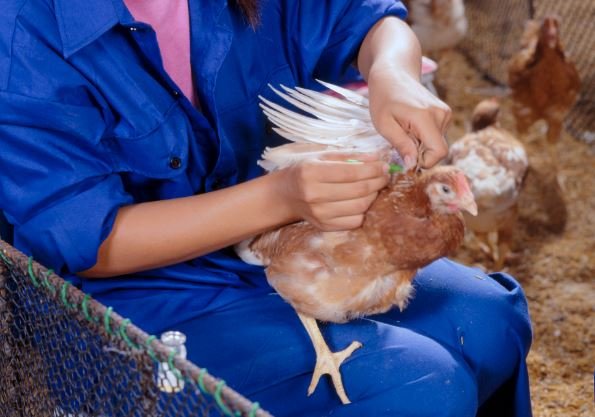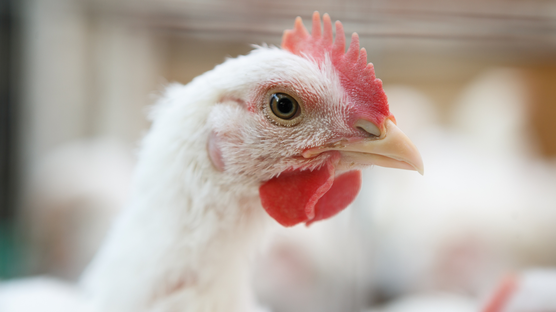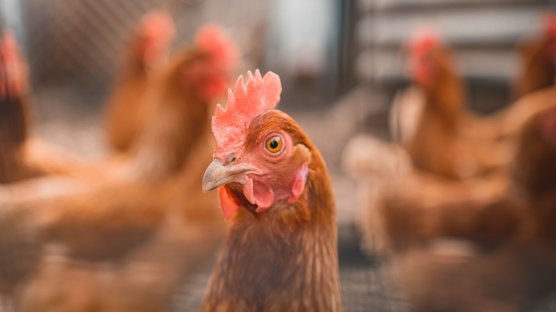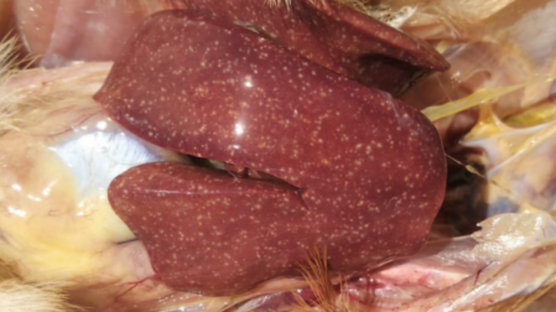
Published on June 17, 2021
The importance of vaccination
Vaccination plays a crucial role in the management of the health of your poultry flock. Vaccinations can prevent a number of poultry diseases. Vaccination is a process in which the healthy chickens are infected in a controlled way with a dead or weakened pathogen. After the vaccination, the birds’ own immune system will respond to the vaccine by activating an army of cells designed to attack and destroy the invaders before they cause damage to the bird. After the attack, several specialized immune system cells remain, called memory cells. These memory cells will remember the infectious agent to which the bird is vaccinated. If later life an encounter with the infectious agent takes place, the birds’ immune system is capable of a quick “detect and destroy” of the infectious agent, resulting in protection from the disease and therefore preserving the productive health of your flock.
Vaccination require energy of the bird and can be stressful and painful for the chicks, as each vaccination will result in a defense reaction. This stimulated immune response caused by the vaccine could negatively affect the bird’s appetite and therefor growth. Therefor it is advised to keep the number of vaccinations to a minimum, especially during the first weeks of life as the goal is to stimulate the chicks as much as possible to grow. Any vaccination during the rearing period should be well thought off, always check that the chicks are fit and healthy prior to vaccination and that they have recovered from the previous vaccination. A well-balanced design of your vaccination program is therefore essential. Please consult your local veterinarian to develop your vaccination program.
We recommend the following when administering vaccines:
- Always follow the instructions of the vaccine manufacturers when storing, handling and administering the vaccines
- Keep a record of the vaccination program
- Always clean and sterilize the vaccinating equipment thoroughly after use.
- Only vaccinate healthy birds, isolate sick birds from your flock
- Make sure the crew is trained in proper vaccine administration
- For vaccines administered via the drinking water, make sure the drinking system is clean and make sure you follow the minimal required drinking time as stated by the vaccine manufacturer. Discard the drinking water afterwards, wash the drinkers and provide fresh water for your birds
- Make sure that the vaccines get properly distributed over the entire poultry house when administered via the water or spraying
- Monitor the result of the vaccinations (antibody titer test)
- Always destroy unused mixed vaccines after the task has been completed.
Vaccination procedures
There are different ways to administer vaccines to your poultry flock, it is crucial that the correct method is used for each vaccine. Several frequently used methods to administer vaccines to chickens are listed below, keep in mind to always safeguard the correct dose of the vaccine:
Intramuscular injection
This method involves the use of a needle to insert the vaccine into the breast muscles of the chickens. The use of an automatic syringe can speed up the process as it makes the technique relatively easy and doesn’t harm the bird. Regularly check the equipment to ensure that the correct dose is administered. Train the crew in administering the vaccine at the right position in the breast muscles. Special care must be taken to ensure that the needle does not pass through into one of the key organs. Good hygiene and proper vaccine handling procedures can prevent unnecessary contamination.
Subcutaneous injection
Very similar as the intramuscular injection, but in this case the vaccine is injected under the skin, usually at the back of the neck. Sufficient attention must be given to ensure that the vaccine is injected into the chicken (not just into the feathers).
Ocular
The vaccine is administered to the chicken’s eye via an eyedropper. From here the vaccine makes its way into the respiratory tract via the lacrimal duct.
Nasal
The vaccine is introduced into the chickens’ nostrils either as a dust or as a drop.
Oral
The vaccine is given in the chickens’ beak. From here it may make its way to the respiratory system or it may continue in the digestive tract before entering the body.
Drinking water
Adding the vaccine to the drinking water of your flock. This vaccination method is less time consuming and less stressful. The recommended technique is as follows:
- All equipment used for vaccination is carefully cleaned and completely free of disinfectants and detergents (keep in mind that live vaccines administered via the drinking water can be destroyed by disinfectants and soap)
- Only use cold, fresh and clean water (drinking water quality)
- Open the vaccine bottle under the water
- Make sure the birds are thirsty to stimulate the intake of an adequate dose of the vaccine.
- All the water present in the drinkers and nipple lines should be consumed prior to vaccination
Spray
The vaccine is sprayed onto the chickens, or into the air above the chickens, by making use of a suitable spray applicator, that controls the spray droplet size. The vaccine will fall onto the chickens and enters the body of other chickens as they pick at the shiny vaccine droplets. The chickens might also inhale small quantities. It is important to ensure an even distribution to all birds in the flock.
A well-designed vaccination program is key, but it will only be effective when combined with proper management, good nutrition and a well followed biosecurity program. The combination of these aspects will decrease the disease pressure significantly and it will therefore increase the likelihood that your flock will perform to its genetic potential.
Tip: Never mix your flocks of different ages, prevent any contact between your new flock in rearing and your flock in production at all times. Apply strict biosecurity rules to prevent disease spreading from the older flock (which is already protected by their immune system) to the flock in rearing. Always visit your flocks from young to old and prevent any possible contamination at all times (change shoes and wash your hands carefully).

References
- Copyright pictures Merck Animal Health



